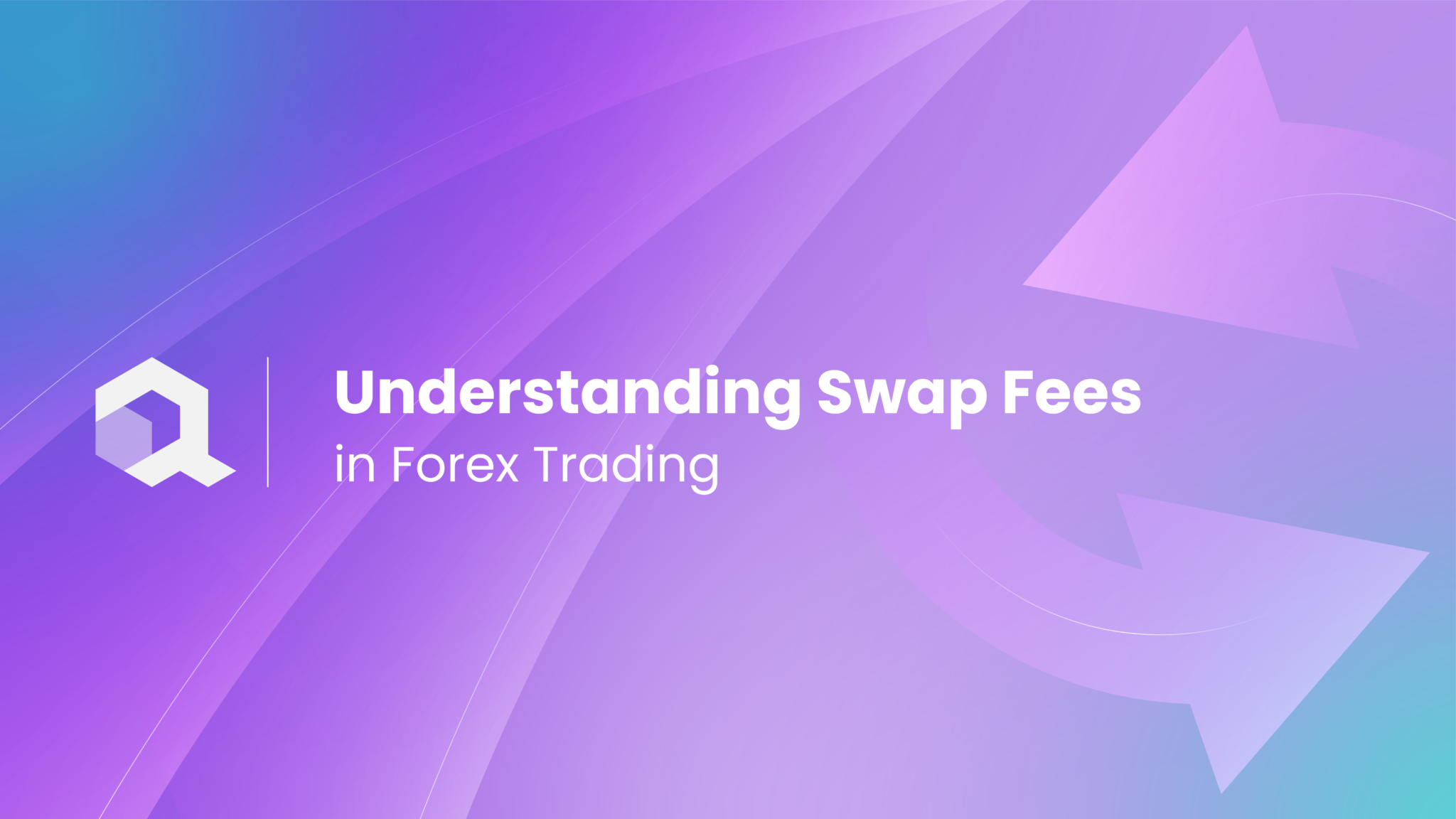
The global forex trade entails several elements that cumulatively determine the total cost of holding a position. Traders must understand swap fees since they are among the costs associated with holding on to a position.
They should keep abreast of any changes in interest rates, the economy and central bank policies that may affect the differential of rates. Another element that traders meet along the way is swap costs, commonly referred to as rollovers or overnight interests. A trader’s bottom line may be highly influenced by swap fees. This knowledge is paramount to achieving reasonable risk management as well as financial planning.
What are Swap Fees?

The other component of the pricing system in the forex markets is swap fees (also called rollover fees). These are the real money charges or gains a trader earns while staying in open positions over night. The workings of swap fees should be understood in the trading of currencies that occur in the market of foreign exchange every five days except on Saturday.
The forex market never closes; hence, traders can transact on an hourly basis. On the other hand, when a trader decides to hold open a position beyond the daily cut – off time, usually stipulated by brokers, the notion of swap fees applies. These fees are due to the interest rate spread that exists between the corresponding currencies utilized in the trading pair.
A trader can get credit if, for instance, the currency they have holds more interest than what it is being sold at. Essentially, this credit provides compensation against the opportunity cost arising from the fact that funds were not utilized for alternative purposes, which could have yielded additional interests. However, should the trader be selling a high-yield currency (one with a higher interest rate), he or she would face the payment of an inverse swap (paying to hold this position).
It is important to understand what affects swap fees so as to make good trading decisions. As per swap rates for traders, central bank policies, economic indicators, and interest rate differentials are looked at to anticipate movements in swap rates. Their trade position is aligned to the movement of the market, which is a good strategic approach.
In addition, swap fees make risk management even more intricate. Traders have to look at more than just price movements; they need to factor in what it might cost them overnight if they hold positions through that. Thus, knowledge of swap fees forms one of the necessary components of a trader’s equipment for coping with the forex world easily.
This is why swap fees reflect the fluctuations of interest rates, which are dictated by the changing currency values in the global FX market. Understanding this complex concept provides traders with an advantage as it helps in position-tuning to the vagaries of worldwide currency markets.
Calculating Swap Fees

The swap fees vital for the foreign exchange market are precisely determined by subtracting the interest rate in one’s currency from that of the other participant. Central banks have a huge impact on interest rates, whereby they tend to vary with consideration of different parameters, including economic conditions, monetary policies, and other geopolitical matters. Swap fees are complex elements that require detailed comprehension on the part of the traders who seek to negotiate them efficiently.
The monetary policy custodians are the central banks, who hold the central figure in controlling or setting the level and pattern of interest rates. Therefore, they form the basis of the swap charges. Central banks may act in response to economic conditions, which include inflation rates and employment numbers, for the purposes of stimulating or cooling economies. There is also volatility in currency markets caused by geopolitical occurrences like trade conflicts or political uncertainty that force central banks to reassess inflation and consider adjusting interest rates again.
Also Read: Market Maker Options: Definition and How They Make Money
The traders are required to bear the changes incurred as they try to search for more opportune points in the market. Through this process, the interest rate difference between the currency being purchased and that being sold on forward contracts provides a basis for determining swap fees. The differential represents the opportunity cost or benefit accrued by the trader who holds a position overnight.
The formula commonly employed to calculate swap fees is straightforward yet crucial for traders:
Swap Fee = Position Size × Swap Rate
In this case, position size shows the size of the position, and swap rate indicates the difference in interest rate existing between both currencies included in the trade. This is a useful formula that serves as a practical guide to traders who want to estimate the effects of swap fees on their positions.
In the process of calculating swap fees, traders realize that it cannot be just an easy formula since it is different from case to case. These include varying position sizes and an interest rate that changes constantly. Thus, traders use this formula as one of their instruments, applying different methods depending on the conditions in the Forex market.
Generally, the complexities in calculating swap fees go beyond mathematics; they are an important consideration that traders must understand. With this information, traders will be in a position to predict the future effects of interest rates on their positions, giving them the capability of making intelligent choices in today’s global foreign exchange market.
Managing Swap Fees

There are many things involved in a trader’s toolbox that include effectively managing and reducing swaps in this changing forex environment. Here are several strategic steps traders can take to navigate and optimize their positions:
– Stay Informed
It is important for traders who are willing to understand the intricacies present in the FX market to comprehend these economic markers. A wide range of factors, such as the rate of inflation, total unemployment, and general economic growth, dictate the decisions of central banks. Understanding some of these indicators helps traders predict in which direction central banks are likely to lean towards their monetary policy.
The ability to interpret central bank announcements is a skill or art on its own. These messages tend to be couched in nuanced language that traders should learn to decode. This gives one the ability to anticipate shifts in interest rates following the announcement of the policy stance. However, traders are able to be ahead of markets and position themselves accordingly, as this proactive approach leads to optimal portfolio allocation and maximum returns.
– Time Zone Considerations
The famous 24 hour per day Forex market gives trader’s opportunities every minute of the day. This perpetuity, however, presents an essential component that traders are required to address each day—the end of days in regard to the computation of swap fees. These cutoff times are different for every broker, so every broker has its own schedule in which it computes this fee. It is important to understand that these cut-off times are more than mere technicalities for any trader who wants to optimize positioning.
These cut-off times are important as they directly affect the accumulation of swap charges. These defined times may also impact charges related to holding open or closing positions. Therefore, traders have to trade based on these cutoff times in a tactical way. At the same time, this strategic alignment is especially important for the traders who hold long positions, with the costly aggregate amount of swap fees over the whole term undermining their revenues from the deal at large.
Also Read: Market Making: Strategies and Techniques
– Choose Pairs Wisely
The exchange rates for other currency pairs do not directly correspond to those of various currencies; rather, they include the respective differences in rates, which have an immediate impact on swap rates. This is an area of trading that requires acknowledgement and navigation of these diversities for informed trading. Therefore, traders have to carefully analyze these subtleties while determining which currency pairs to trade.
Swap fees are based on the difference in interest rates that exist among various currencies constituting a particular par. Thus, every currency has its own individual peculiarities regarding the swap interest rate. Traders are therefore very selective on pair choice as they consider the different interest rates in different currencies.
– Utilize Hedging Strategies
While experienced traders use sophisticated techniques known as hedging, which entail opening positions in the opposite direction to reduce risk exposure, in forex trading, where changing markets are typical, one of the most significant tools is hedging. Hedging is also used specifically in the swap fee environment, where traders use it to neutralize or decrease expenses for holding positions overnight.
For instance, it becomes apparent when a trader expects that swap fees may go up as a consequence of anticipated rate movements. For example, let us assume that there is a trader carrying a long position in a given currency pair and anticipate an increase in the interest rate. In that case, the trader could opt to open a short position in the same currency pair. This is done in order to combat the possible surge in swap expenses caused by leaving the long side open until the next business day.
– Broker Comparison
Broker selection is equally important because it may affect the overall costs and, thus, the profitability of a trader. However, there are many things to take into account, especially in relation to the differences between swap-rates between different dealers. The interest rate differentials are reflected in these rates and make up a significant part of the expense that arises whenever positions remain open during the night. Therefore, traders should not only consider spreads and commissions but also delve deeper into the complexities of swap rates when comparing brokerage firms.
This divergence of spreads also varies greatly amongst brokers—an aspect that affects a trader’s P&L directly. It is advisable to do a comparative study of several brokers’ available swaps in this case. While some brokers offer better values, this could be more so for the traders who hold positions over night. This examination is especially important to be undertaken by swing traders and carry trade traders, as well as other traders who place their stress on long term positions.
Multiple Perspectives on Swap Fees
Swaps are a regular aspect of foreign exchange trading that could be understood differently by different traders and whose significance may vary. Traders must have basic knowledge about swap fees because each trader’s stance on these may affect his choices and overall strategy about trading.
1. Negligible Cost in Short-Term Trading
Such a view relates to the overall objective of raking in instant profits. The short-term nature of holding positions serves to mitigate the effect of swap fees on the bottom line. Such traders tend to do it with high frequency and try to make money out of tiny price changes within a larger profit picture.
However, such a point of view does not cancel the importance of a swap fee absolutely; it just considers them in light of short-term trading tactics. Traders taking this line of thought will always strive to keep the cost low or affordable and even allow for minor swap charges so long as they comply with the short run strategy or position turnover requirement.
2. Crucial Factor in Long-Term Positions
Traders concentrating on long-term approaches pay close attention to swap fees because they are part of their overall expense assessment. For example, swap fees can add up significantly over such a period, regardless of whether they are weekly, monthly, or annual. Therefore, it becomes necessary that such traders take note of their swap fees, as they have a tendency to make substantial losses over extended periods.
For example, long term investors can prefer capital appreciation over short terms ones, like having their positions open for a long time. Moreover, other types, such as swing traders or carry traders, that deal with swap charges in order to hold their positions for some time cannot avoid this constant pressure.
Considering Both Perspectives
Traders must balance out both of these viewpoints, as it is important for traders’ decisions to harmonize with their individual trading style and purpose. The short-term traders might tend to focus on fast execution and narrow spreads, while the long traders could include swaps for risk management measures. Swap fees are an important component in both cases, and this understanding lets traders act based on the desired goals.
Swap fees depend on each trader’s approach, time horizon, and all-round trading strategy. Traders should accept both sides arguments and consider their approaches in the adjustment of their plans towards the most relevant trading styles as well as the overall capital growth goals they are looking for.
Conclusion
The process of carrying on in a Forex position includes swap fees, which play a great role and should not be neglected. Trading requires understanding how swap fees are calculated, paying attention to interest rate differentials, and adopting methods for swaps that fit trading objectives. At the heart of it all, swap fees are set on the basis of the difference in interest rates between the two currencies in a trading pair.
Monitor economic calendars and central bank announcements since these variables may change due to economic conditions, central bank policy or other geopolitical reasons. To manage this aspect effectively, one may consider strategic position management, selecting suitable currency pairs depending on interest differentials, and hedging to eliminate or minimize the costs of swaps. Finally, swap fees must be taken into account. By calculating them, keeping tabs on related factors such as overnight swaps, and making use of smart strategies, traders will be able to negotiate their way through this aspect of forex transactions and become well-informed forex traders.
Disclaimer: The information provided by Quant Matter in this article is intended for general informational purposes and does not reflect the company’s opinion. It is not intended as investment advice or a recommendation. Readers are strongly advised to conduct their own thorough research and consult with a qualified financial advisor before making any financial decisions.

I craft stories that make complex ideas clear. I simplify the blend of data science, machine learning, and crypto trading, showcasing how advanced tech and quantitative models analyze data for informed trading choices. Join me in exploring the realm of quantitative trading, where my narratives make intricate concepts easy to grasp.
- Alifia Berizkyhttps://quantmatter.com/author/alifia-berizky/
- Alifia Berizkyhttps://quantmatter.com/author/alifia-berizky/
- Alifia Berizkyhttps://quantmatter.com/author/alifia-berizky/
- Alifia Berizkyhttps://quantmatter.com/author/alifia-berizky/
